The hard approach :
i) You find CLOCKWISE the rectangle 2D corners in image.
std::vector<cv::Point2f> rect_corners_2d; // TODO find clockwise rectangle 2D corners in image
I suppose you have these points since you have drawn the rectangle.
ii) You define CLOCKWISE the rectangle 3D corners in physical units whenever that rectangle stands right on camera centered on its optical axis facing it.
float width; // TODO set rectangle's physical width
float height; // TODO set rectangle's physical height
std::vector<cv::Point3f> rect_corners_3d =
{
cv::Point3f(-width/2, -height/2, 0.0), // top-left
cv::Point3f(width/2, -height/2, 0.0), // top-right
cv::Point3f(width/2, height/2, 0.0), // bottom-right
cv::Point3f(-width/2, height/2, 0.0) // bottom-left
};
iii) You rotate your image points such that each 2D corner corresponds to its 3D counterpart.
// rectangle's top-left corner must be the first in 2D image points since it is the first in 3D defined ones
int index; // TODO set index of top-left corner in 2D image points
std::rotate(rect_corners_2d.begin(), rect_corners_2d.begin() + index, rect_corners_2d.end());
iv) Know your camera intrinsic parameters and lens distortion coefficients.
cv::Mat_<double> intrinsic_parameters; // TODO set camera matrix
cv::Mat_<double> distortion_coefficients; // TODO set lens distortion coefficients
I hope you have your camera's calibration.
v) Extract camera's pose relative to seen rectangle : http://docs.opencv.org/2.4/modules/calib3d/doc/camera_calibration_and_3d_reconstruction.html#solvepnp
cv::Vec3d rotation;
cv::Vec3d position;
cv::solvePnP(rect_corners_3d, rect_corners_2d, intrinsic_parameters, distortion_coefficients, rotation, position);
The position here has the same unit as you used in ii) for defining 3D corners.
vi) Read your horizontal angle.
double hangle = rotation[1]; // Y axis <--> horizontal angle
CONCLUSION : The calculated pose is the camera's pose relative to the seen rectangle, not the other way around as you expected. The position and rotation need to be inverted. Note also that camera's Y axis goes downward and that OpenCV uses a right-handed coordinates system. You might want to reconsider the sign of the final angle.
 Gives resulting mat dump:
Gives resulting mat dump: 

